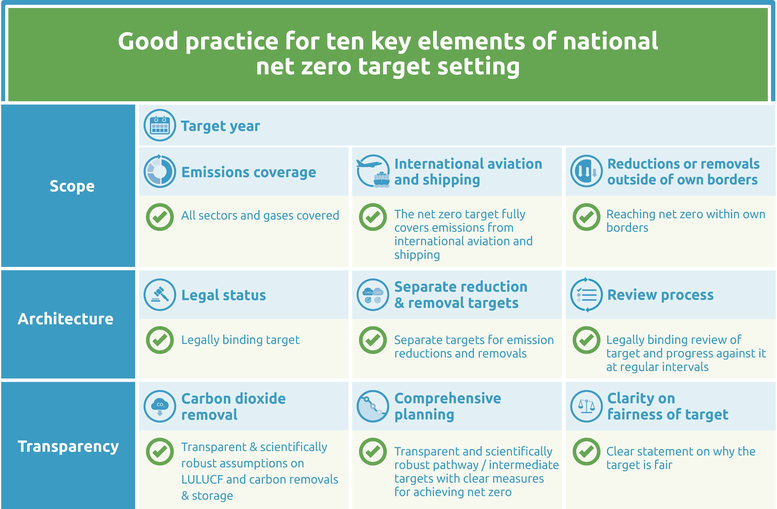Net zero targets
Summary
We evaluate Brail’s net zero target as: Poor.
Brazil aims to achieve climate neutrality by 2050, a target reiterated in its 2023 NDC submission (Government of Brazil, 2023b). However, no further details on the scope, architecture and transparency have been communicated so far, which limits our ability to assess the comprehensiveness of the target. As of August 2024, Brazil has not submitted a long-term strategy to the UNFCCC.
Aiming for climate neutrality by 2050 is a step in the right direction: transitioning to a low-emissions development pathway in compliance with international climate change commitments. However, Brazil should clearly state its plans for reducing emissions across all sectors of the economy, including LULUCF.
CAT analysis of net zero target
Ten key elements
Scope
- Target year – Brazil aims to reach climate neutrality by 2050.
- Emissions coverage – Brazil provides no information on the sectors and gases covered. Although the country consistently uses the term climate neutrality, which implies that the target covers all greenhouse gases, further information would enhance transparency of the net zero target.
- International aviation and shipping – Brazil provides no information on its intention to cover international aviation and shipping.
- Reductions or removals outside of own borders – Brazil provides no information on its intention to use international offset credits to meet its net zero target.
Target architecture
- Legal status – As of August 2024, Brazil has not submitted an LTS to the UNFCCC. However, its current NDC makes reference to climate neutrality by 2050. The goal of climate neutrality by 2050 is stated in the Bill No. 6539, which was approved by the Senate in November 2021 and is going through the legislative process in the Chamber of Deputies.
- Separate reduction & removal targets – Brazil has not provided information on whether it will establish separate emission reduction and removal targets.
- Review process – Brazil provides no information on its intention to establish a review cycle for its net zero and intermediate targets.
Transparency
- Carbon dioxide removal – Brazil provides no information on its intention to communicate transparent assumptions on carbon dioxide removals.
- Comprehensive planning – Brazil does not provide an underlying emissions pathway to achieve the climate neutrality target, nor does it specify measures and actions needed to reach the goal.
- Clarity on fairness of target – Brazil provides no information on its intention to explain the target’s fairness.
Good practice
The Climate Action Tracker has defined the following good practice for all ten key elements of net zero targets. Countries can refer to this good practice to design or enhance their net zero targets.
Further analysis
Latest publications
Stay informed
Subscribe to our newsletter





